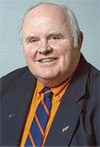With profit margins squeezed due to lower milk prices, dairy farmers are examining ways to reduce their cost of producing milk. Feed cost is at the top as dairy farmers control this expense compared to fuel, fertilizer, labor and health costs, and represents 50 percent of costs of production.
Feed additives are on the “hit list” to remove from the ration. On U.S. dairy farms, feed additive investments (not an expense) range from $0.10 to $0.25 per cow per day.
Significant cost savings could be realized, but does the dairy farmer save $0.15 while losing $0.40 to $0.60 return in milk production, milk components, somatic cell levels, lower fertility or a decline in immunity/herd health?
If the feed additive was a correct decision with $26 per hundredweight (cwt) of milk, the feed additive is an economic investment with $14-per-cwt milk. Several questions and answers are listed below.
Q. What did the typical U.S. dairy farmer select in 2015?
A. Table 1 lists the selected feed additives in 2006 compared to 2015. Buffers were the number one feed additive selected, while 11 percent did not purchase any additive. Interesting trends compared to 2006 are the increased use of mycotoxin binders and probiotics.
Q. Which feed additives could be considered by dairy farmers
A. Each dairy farmer may have different feed additives based on the feeding program, age of cows, level of milk production, environmental challenges and health risks. I have listed my recommendation by stage of lactation and gestation below.
Dairy farmers can check with their nutritionists and veterinarians for guidance and recommendations. Dairy farmers should understand how each additive can function in the herd and customize the feed additive list.
-
High-producing cows/group: Rumen buffers, monensin (Rumensin), yeast product, silage inoculants, organic trace minerals (zinc, copper, selenium and chromium) and biotin
-
Close-up dry cows: Monensin, yeast product, silage inoculants, organic trace minerals (zinc, copper, selenium and chromium) and anionic product, if needed, based on dietary cation-anion difference
-
Fresh cow group: Rumen buffers, monensin, yeast product, silage inoculants, organic trace minerals (zinc, copper, selenium and chromium), rumen-protected niacin and choline (if needed) and biotin
-
Low-producing group: Monensin, yeast product and silage inoculants
-
Far-off dry cows: Monensin, silage inoculants and organic trace minerals (zinc, copper and selenium)
- Growing heifers: Monensin and silage inoculants
Q. How can I evaluate expected results?
A. Ask manufacturers or salespersons for published and peer-reviewed research results (usually published in technical journals). Look for statistical comparisons to be sure the results are repeatable using probability.
For example, if the difference in dry matter intake between control cows and cows fed the feed additive was significant at P less than 0.05, the probability of the response occurring was 95 percent on your farm or other studies. Two other research approaches are listed below that you can ask for if adequate research has been conducted.
- A type-one error occurs when a feed additive is fed and your dairy cows/cattle did not respond. A type-two error occurs when the dairy farmer does not include a feed additive when the dairy cow/cattle would have responded.
Each error has an associated cost based on the cost of the feed additive, milk response, value of the milk, variation in the research results and number of studies. Examples are listed in Table 2.
- A meta-analysis is a statistical evaluation of selected research data. This approach allows for more studies to be combined and statistically analyzed. An example of a meta-analysis focusing on feeding monensin to lactating cows conducted by the University of Guelph, Canada, is outlined in Table 3.

Q. What factors should you consider when considering a feed additive?
A. The following criteria can be considered: Know the recommended level of the feed additive (for example, adding 0.75 percent sodium bicarbonate to the total ration dry matter). An example is 50 pounds of ration dry matter should contain 0.37 pounds of sodium bicarbonate. You cannot cheat the recommended level to a lower level to save money while losing the beneficial effect.
Determine the current benefit-to-cost ratio using today’s milk price versus the cost of adding the feed additive. Examples of benefit-to-cost ratios are 6-to-1 for rumen buffers, 5-to-1 for yeast products and 14-to-1 for zinc methionine.
These benefit-to-cost ratios were based on milk yield. Be sure to adjust for changes in milk protein percent or milkfat test. If the feed additive benefit is hoof health or immune stimulation, the benefit-to-cost ratio is more difficult to calculate but should be considered.
How will the feed additive impact your herd? Table 4 lists eight different areas that feed additives could impact performance along with feed additives listed.

How long will the impact of the feed additive take to have the impact? Biotin to improve hoof health requires six months before responses are seen, while milk production response occurs in less than 30 days.
Q. What feed additives should be considered in the future?
A. Probiotics or direct-fed microbes will continue to be studied to determine which bacteria can have desired impact, the number of bacteria needed to be fed and conditions on the farm when a response may be expected.
Essential oils continue to be studied in Europe, as monensin is not allowed or is restricted. Essential oils may function similarly to monensin but cost about three times more per cow per day than monensin, and the optimal blend of essential oil must be determined.
Feed enzymes that improve feed digestion or feed efficiency by increasing fiber digestion or bound starch could have value. Feed enzymes must survive the impact of rumen fermentation. Feed enzymes can be found in silage inoculants that function in silo fermentation conditions. PD
View a PDF guide outlining six additive categories to help you decide whether to include an additive.
Mike Hutjens is a professor of Animal Sciences Emeritus with the University of Illinois – Urbana. Email Mike Hutjens.





